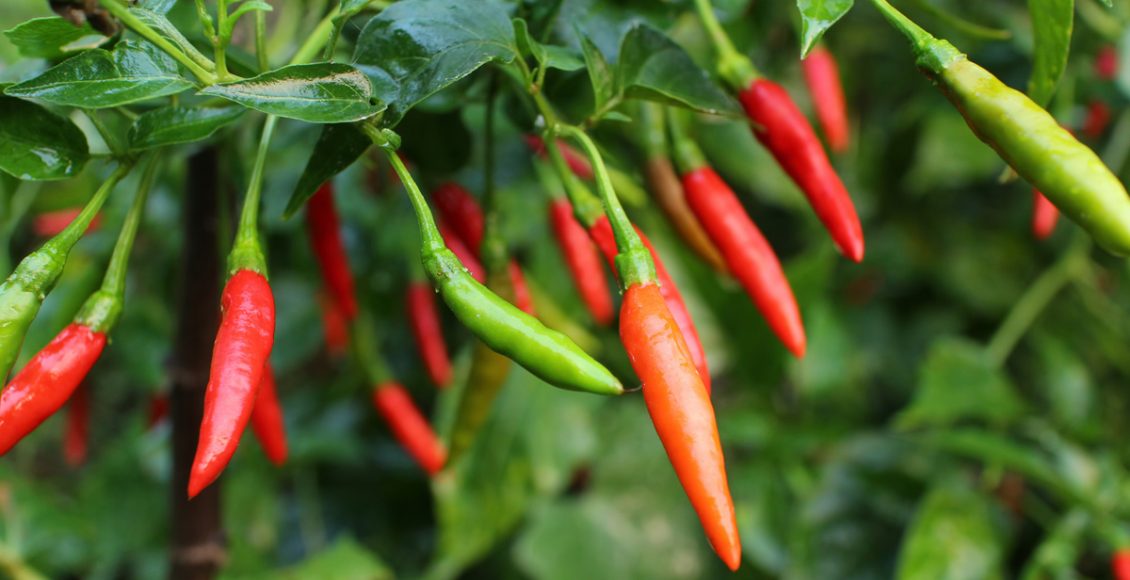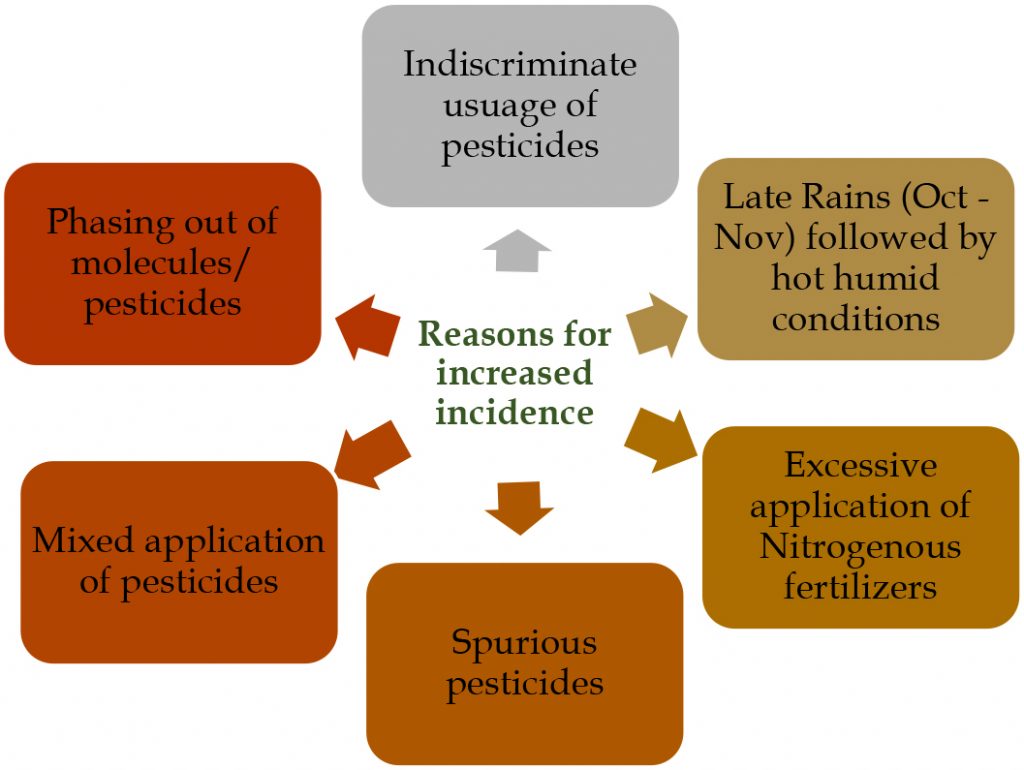
Chilli production under threat of thrips: Need for a holistic strategic approach to combat the pest
India’s chilli is led by Andhra Pradesh (AP) and Telangana (TS), with 50% of the total country’s chilli production coming from 30% of the total national area from these two states. AP and TS predominantly are dry red chilli growing areas and are the country’s largest chilli producers. AP and Telangana together produce 10 lakh tonnes of chilli from 10 lakh acres. Guntur district in AP is the central chilli growing area and the largest chilli market in Asia. Over the last few years, the incidence of pink bollworm in cotton coupled with dry chilli’s constant lucrative market price has encouraged farmers to shift to chilli cultivation. This season chilli cultivation in these states was severely affected by a new Thrips species, with nearly 9 lakh acres impacted under the influence of the pest. This transforms to an economic impact of more than Rs. 3000 crores (US$ 400 million). The incidence also affected chilli cultivation in Karnataka and Tamil Nadu. Farmers have lost almost 80% of their crops during the season and are highly distressed by this level of infestation.
Thrips parvispinous, an invasive insect from Indonesia, was first observed in 2015 but spread aggressively across the key cultivation areas in the current season. The enhanced incidence aggravated due to the  culmination of several prevailing reasons (Refer Figure). Indiscriminate use of pesticides, mixed application of pesticides, spurious pesticides, and excessive application of nitrogenous fertilizers are some of the primary reasons which intensified the infestation over the years. Rains in Oct – Nov followed by hot, humid conditions triggered the incidence of this species replacing the infestation of common chilli trips Scirtothrips dorsalis. According to the agrochemical industry, the sudden phasing out of several important and popular molecules and pesticides. DDVP (dichlorvos) and Phosalone were the molecules whose unique mode of action controlled the heavy infestation of thrips. The withdrawal of these products without thorough consideration of on-ground availability, efficacy, mode of action, and affordability of alternatives have further contributed to worsening the incidence.
culmination of several prevailing reasons (Refer Figure). Indiscriminate use of pesticides, mixed application of pesticides, spurious pesticides, and excessive application of nitrogenous fertilizers are some of the primary reasons which intensified the infestation over the years. Rains in Oct – Nov followed by hot, humid conditions triggered the incidence of this species replacing the infestation of common chilli trips Scirtothrips dorsalis. According to the agrochemical industry, the sudden phasing out of several important and popular molecules and pesticides. DDVP (dichlorvos) and Phosalone were the molecules whose unique mode of action controlled the heavy infestation of thrips. The withdrawal of these products without thorough consideration of on-ground availability, efficacy, mode of action, and affordability of alternatives have further contributed to worsening the incidence.
To address the intensity of the issue and avoid such future incidences, the Chilli Task Force Committee chaired by GVL Narasimha Rao, a Member of Parliament, met recently in Jan 2022 and scientific community. The committee agreed on adopting a coherent approach across the states where the risk is still prevailing. To manage the risk, farmers need to be advised on good agricultural practices and recommended blue-sticky traps and short-duration varieties until a specific strategy is developed to address the pest. IIHR and Spice Board to conduct training programs for farmers on GAP, judicious use of pesticides, use of IPM, and good hygiene practices to prevent the incidence. ICAR – IIHR to collect samples of resistant varieties and screen against existing molecules that can be used against the pest. Further, the scientific community has been advised to collaborate and share details on tackling Thrips parvispinous on various crops. The scientist and experts were also advised to ascertain the damage and engage with international pest management institutes to understand how the pest is managed across other countries.
Nevertheless, a more proactive approach for understanding the threat of such new species at the early stages needs to be taken care of both by the scientific experts and the crop protection industry to avoid this scale of devastation. In addition to the scientific community working on finding suitable measures for combating the issue, due policy level changes also need to be taken to avoid the availability of spurious pesticides and ensure the availability of appropriate pesticides at affordable prices.
Author:

Connect with Authors at: E-mail agribusiness@sathguru.com
 Grow Beyond
Grow Beyond 

